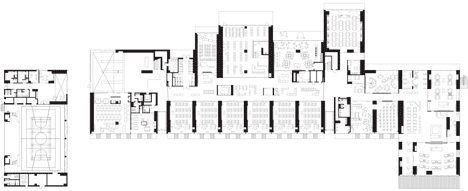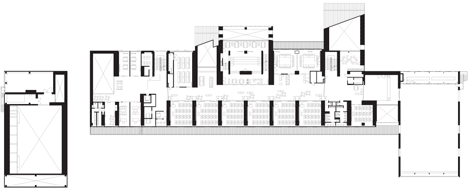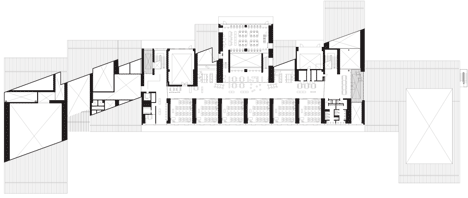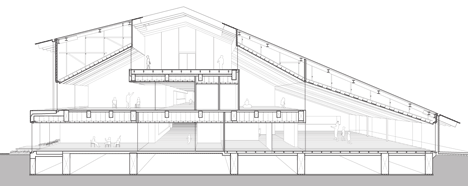Teikyo University Elementary School by Kengo Kuma and Associates
Japanese architect Kengo Kuma conceived this primary school in north-west Tokyo as the modern equivalent of a traditional Japanese schoolhouse with timber-clad walls (+ slideshow).
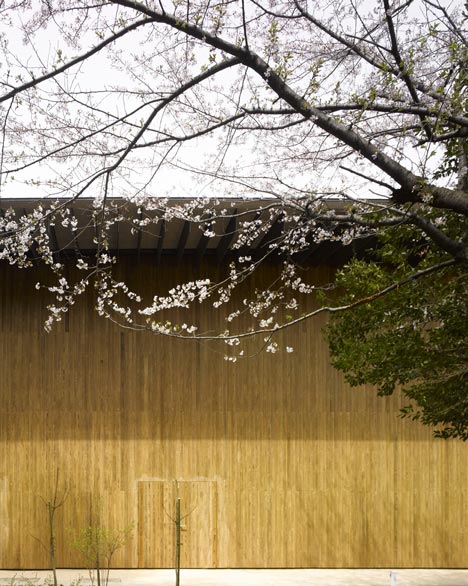
The Teikyo University Elementary School comprises a row of twelve connected classroom buildings that Kengo Kuma and Associates also compares to a row of terraced houses.
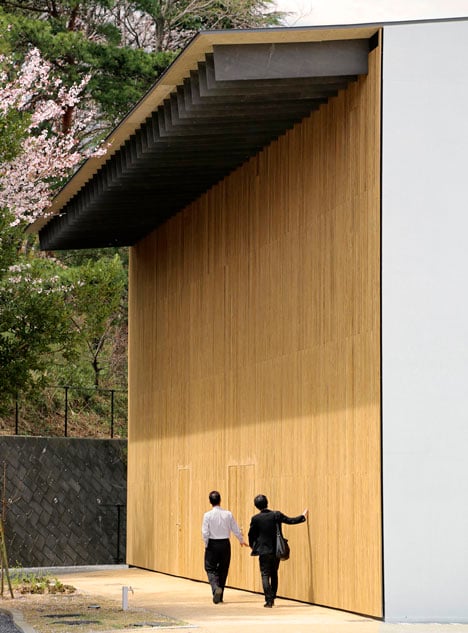
Like many of Kuma's buildings, the three-storey school is clad with cedar on every elevation. "We used cedar for the material of the exterior, as an attempt to recover a wooden schoolhouse in the midst of the big city," says the studio.
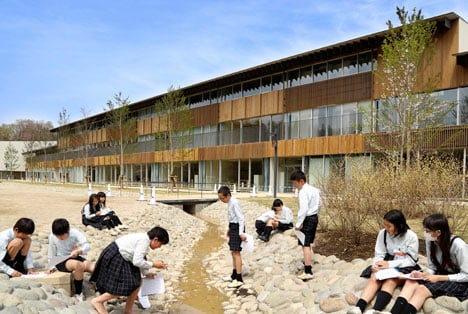
Conventional timber siding was chosen for some surfaces, then combined with "yamato-bari" wooden panelling and vertical "renji" louvres to give variation to each of the facades.
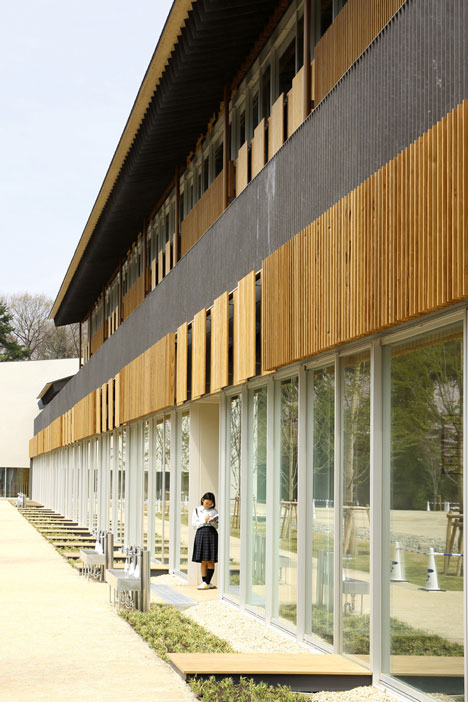
The asymmetric pitched roof is made from steel, which breaks down to a skeletal framework in the courtyard between two of the blocks. The slope of the roof is visible on every floor inside the school, due to a tiered flooring arrangement and several double-height spaces.
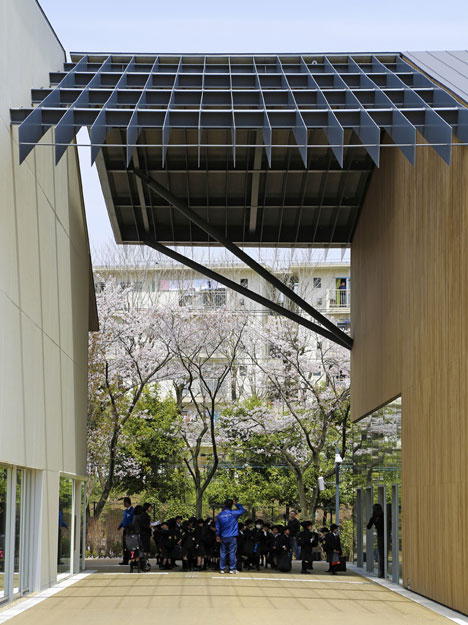
Most classrooms are arranged along the southern side of the building, which is lined with glazing on all three floors. A first-floor balcony also stretches across this elevation, allowing a double-height recess below the eaves.
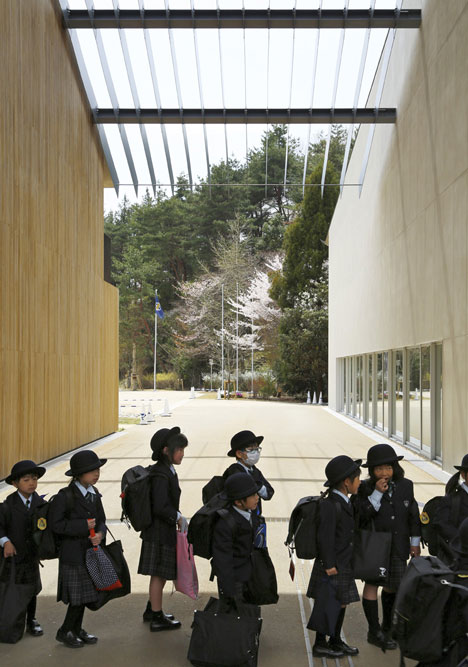
A central axis runs longways through the school to connect each set of classrooms. Group study zones are accommodated within this area, while communal activity rooms such as the library, canteen and media centre are lined up along the northern side.
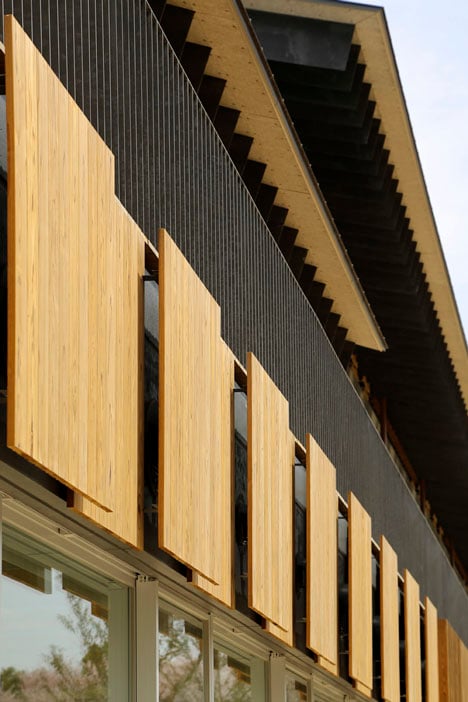
The school is one of several projects completed by Kengo Kuma and Associates in recent months. Others include an experimental house in Hokkaidō and a timber-clad visitor centre in Tokyo. See more architecture by Kengo Kuma on Dezeen.
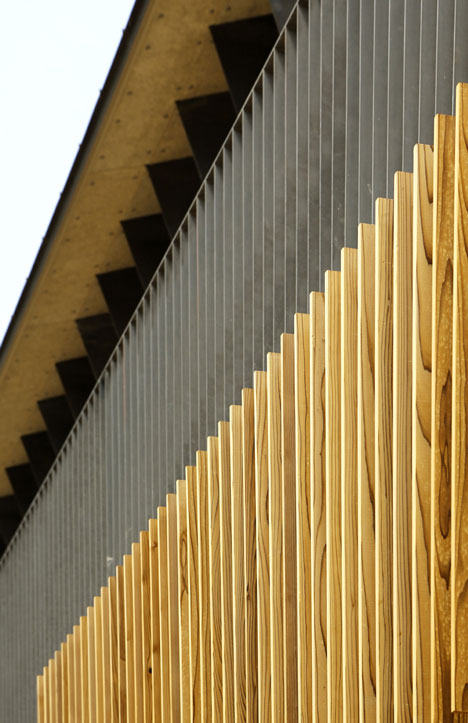
Photography is by Edmund Sumner.
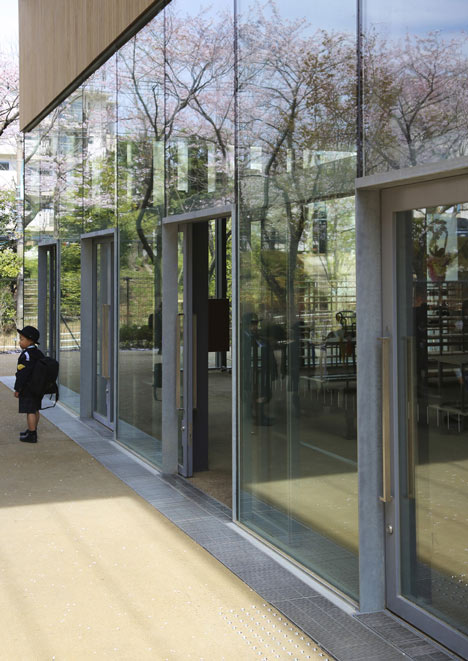
Here's a project description from Kengo Kuma and Associates:
Teikyo University Elementary School
We aimed at a wooden schoolhouse of our age. The building consists of a big roofing and materiality of wood for interior and exterior.
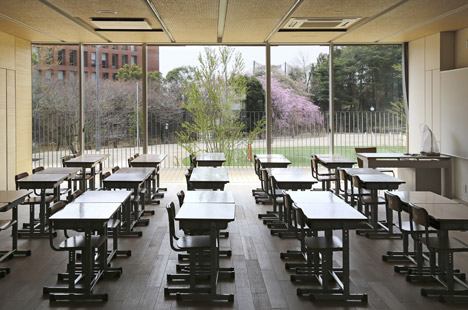
By changing its length and height of eave, roof can create multiformity to respond to its environment and different programs. In this building, we designed a big roof to run through the entire building, differentiating expressions on each side – a relaxed face toward south where abundant green of Tama hill expands – and subtle appearance to the north facing public housing standing in lines.
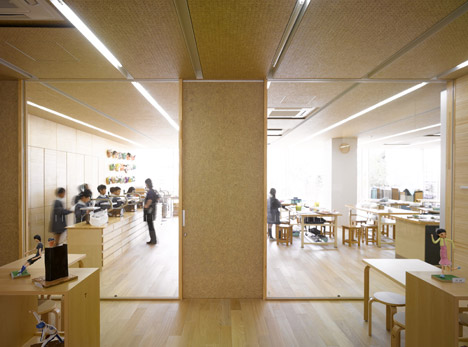
We also changed its form accordingly to the volume of each classroom. As the result, it has grown to a building that looks like 12 different-sectioned terraced houses being arranged in a row.
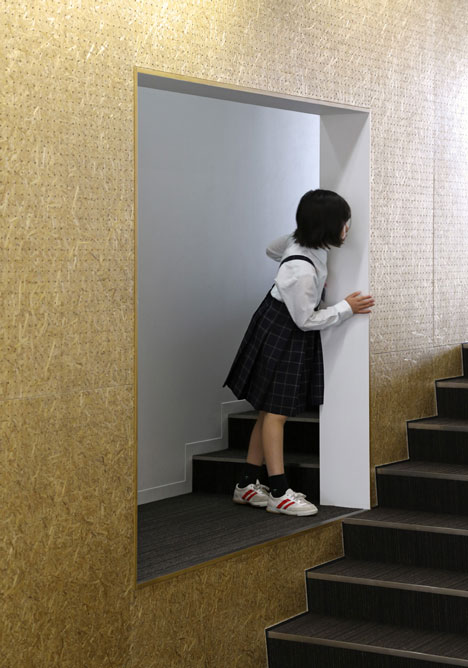
Composition of the space emphasises the atmosphere of the terraced (1-storey) house created by the roof. While the structure is 3-storey, the atrium connects the sections of the special room and the open space on 2nd and 3rd floors, so that you can feel the slope of the roof on every floor. Further, in the center of the building situates the Media Center that skips three stories as a measure to avoid segregation within the building.
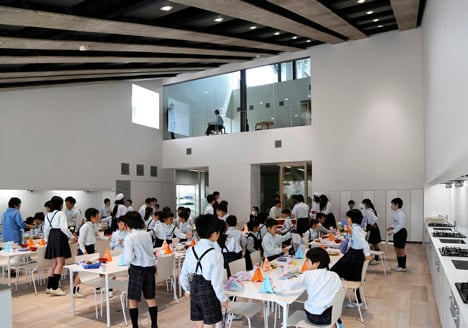
We used cedar for the material of the exterior, as an attempt to recover a wooden schoolhouse in the midst of the big city. We also applied three different lining method for the wall, according to the location and function of the parts in the building – siding work, louvers and Yamato-bari (wood panels arranged with its side slightly layered onto the next one – forming as a whole regular unevenness) so that the building can hold various expressions. Cedar is treated in heat to secure durability.
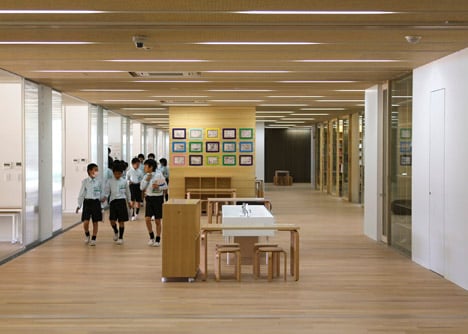
We also utilised the plasticity of trees. We set up a huge wall of a recycled material made from chips of straw, rush and poplar, which can work as a notice board. As there is more freedom in the design of interior for schools, we managed to achieve this environmentally-friendly plan that can enhance the warmth of natural materials.
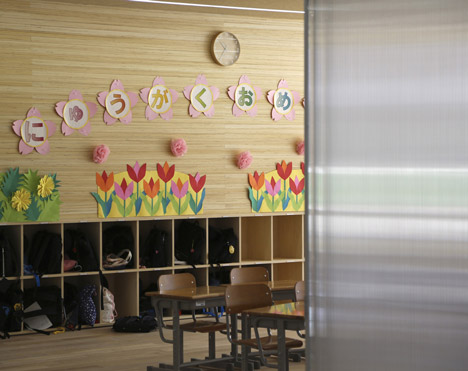
Big roofing is also good for environment for efficient building facilities. Using the wide roof toward the south, we installed there a device to gather heat. In this solar system, the air warmed under the roof circulates and vents from under the floor during winter. The roof also gathers rainwater. The water flows through the vertical drainpipe to the water conduit in the south, and it nurtures a biotope in front of the science room.
